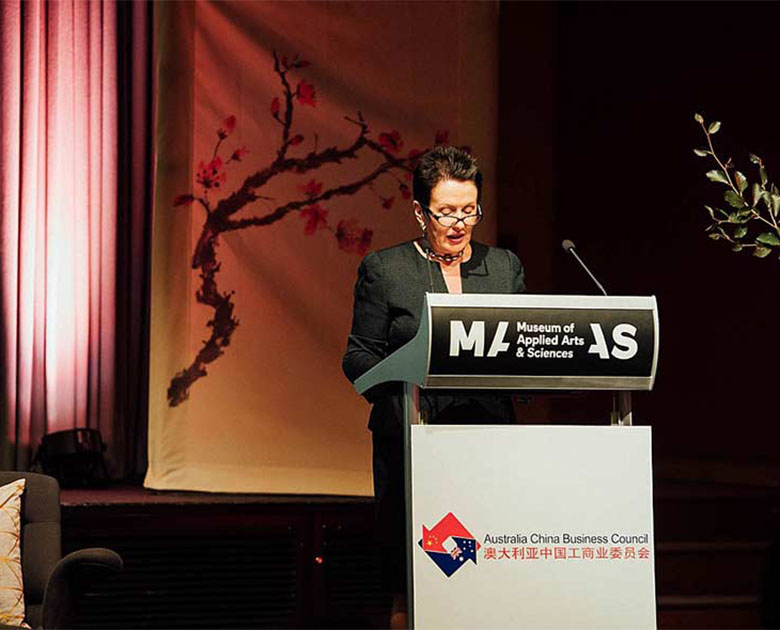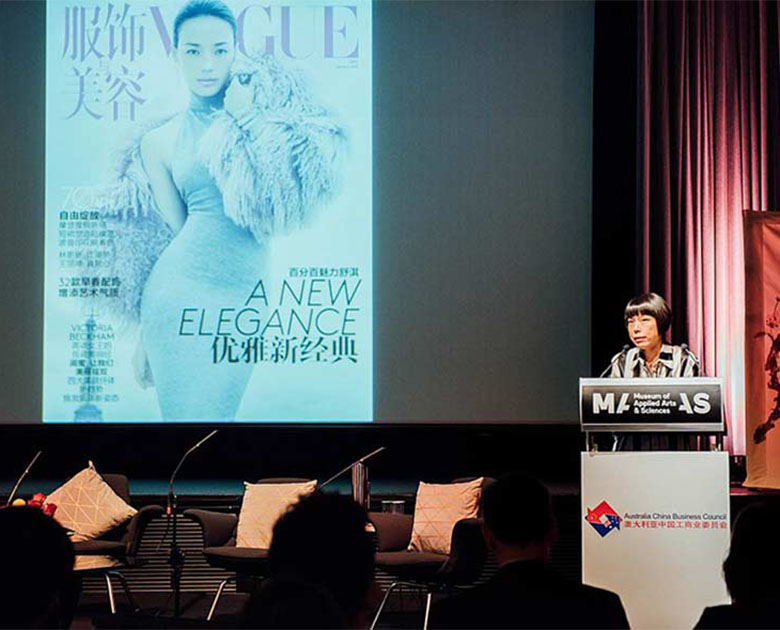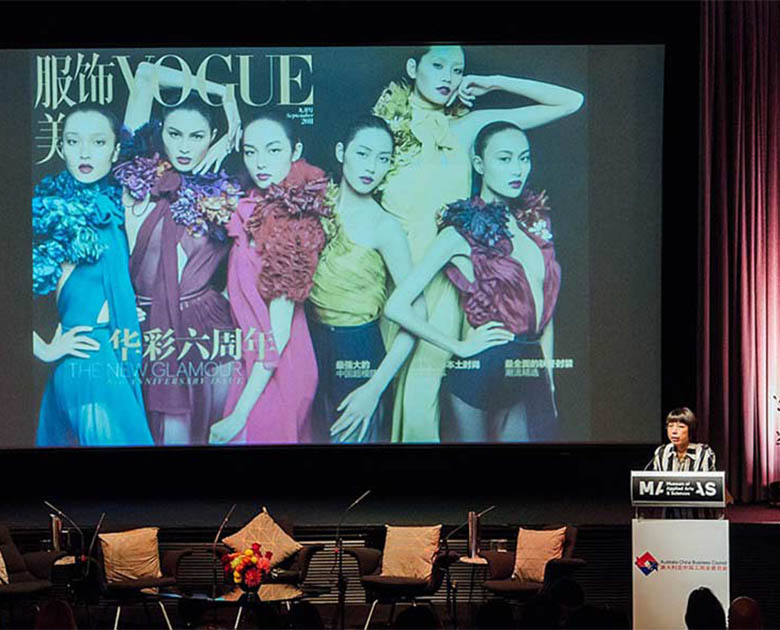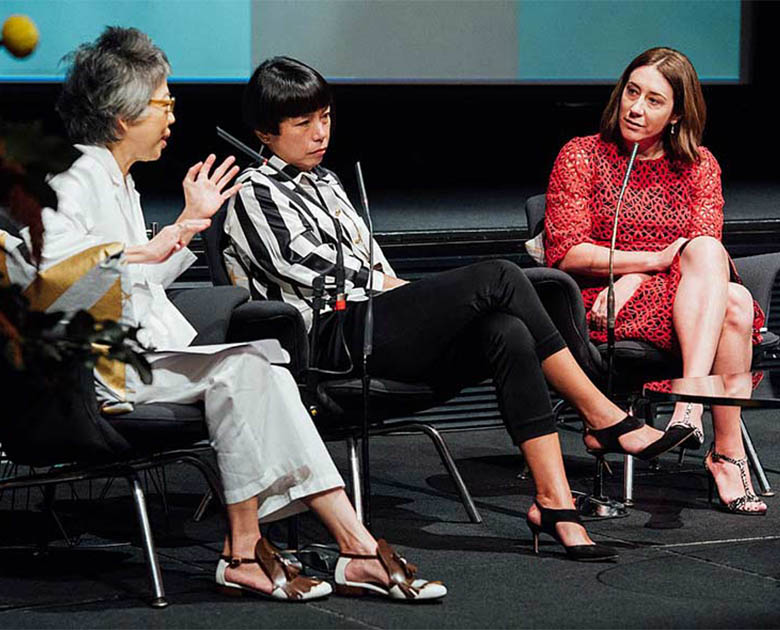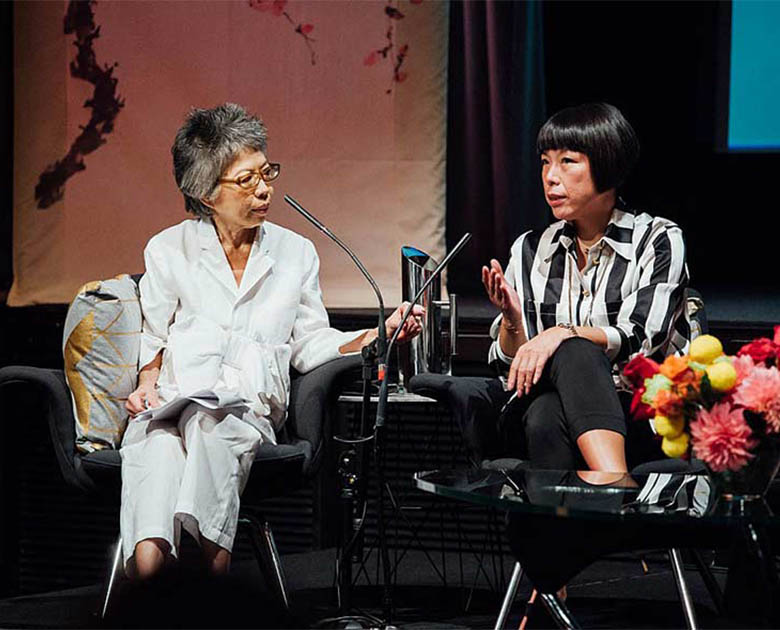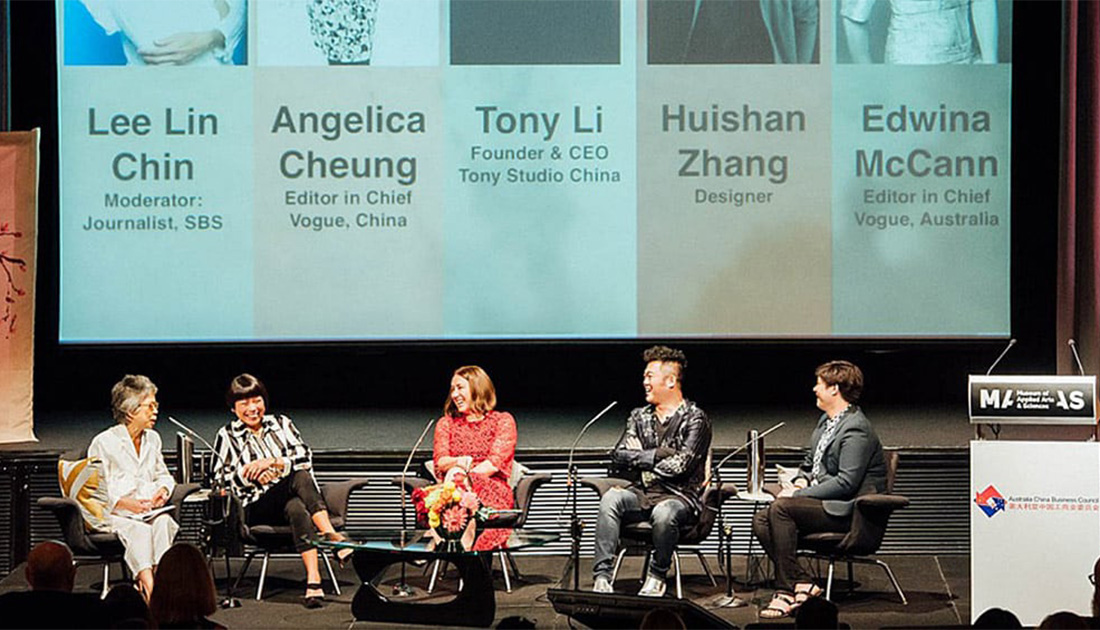The revolution of fashion in China | China fashion & retail forum
On the 10th of February I had the pleasure of listening to some of the world’s experts on China fashion and retail strategy speak on the topic in Sydney. It’s not often that I spend the whole day engaged, hanging on every word at a conference. The calibre and diversity of speakers was impressive. One of the highlights was the enigmatic Angelica Cheung.
ANGELICA CHEUNG
The Editor-in-Chief for Vogue China. Angelica launched Vogue China 10 years ago and is responsible for its growth to international acclaim. She shared with us the battles she had in the early days in a landscape that really didn’t have a fashion and beauty industry. She set the benchmark for Chinese fashion publications and was adamant that the content was always highly creative and most importantly original to China. She has nurtured the career of many talented designers through the magazine and can proudly say that she was instrumental in the creation of the very vibrant and globally respected fashion industry that is turning heads globally.
The attendees were invited to a cocktail party at David Jones that evening where we had the opportunity to really engage with a number of highly respected emerging Chinese designers, their creations now stocked in David Jones. Many of these designers have had the opportunity to study abroad and so have been inspired not only by their own culture but by global influences. It’s hard to imagine that not so long ago China was locked away from the rest of the world with such control over and uniformity in how people were allowed to dress. The decade of the 1950s saw women’s clothing in China lose all aesthetic significance after the founding of New China. Clothing focused solely on functionality, and one shade of khaki.
CHINESE FASHION INDUSTRY TODAY
The Chinese fashion industry has undergone incredible change in the past decade. The fashion market has tripled in the last 10 years and does not look to be slowing down. There is an overall trend to become more fashionable and differentiated. This is such a new phenomenon for the Chinese people.
New technologies are revolutionising the way fashion retailers and designers are running their businesses, particularly influenced by e-commerce and social media trends. There are 568 million internet users in China and buying online is now the way people like to consume. Retailers looking to engage with the Chinese market understand the importance of having a highly strategic online presence designed to appeal to their defined Chinese audience, as part of their international marketing strategy.
Mainstream media is still heavily monitored, which is leading people to engage in social media for content on trends and style. China has it’s own suite of social media platforms:
- Blogging platforms Sina Weibo and Tencent Weibo (known as the Chinese Twitter)
- Renren, the Chinese Facebook and PengYou which is a similar structure to Facebook also
- QQ which is a widely popular instant messaging service
- Douban which is popular with special interest groups such as intellectuals and pop culture junkies looking for music, book and movie reviews
- Diandian, the Tumblr of China
- Youku, the second largest video site in the world after YouTube
- WeChat which is a mobile voice and text app.
Every retailer wishing to engage with the Chinese consumer needs to have a strategic plan around these Chinese social media platforms. The rise of social media has created a group of fashion bloggers who have been considered ahead-of-the-curve influencers. They are becoming essential parties of fashion-world openings, runway shows, and other fashion events. More and more clothing labels start courting these local influencers as they are having an explosive impact on consumer purchasing decisions.
China has the largest mass fashion market in the world. It is a market that cannot be ignored.
OTHER SPEAKERS
Edwina McCann, Editor-in-Chief of Vogue Australia, Kellie Hush, Editor-in-Chief of Harpers Bazaar and David Meagher, Editor of Wish Magazine all had insightful comment on the rise of the Chinese fashion industry and the Chinese middle class and luxury consumer and the effect this has had on the Australian market. We also heard from Paul Lacy, co-founder and director at Australian Swedish stationery retailer Kikki.K. Paul shared his own experiences in creating a global strategy and the power of social media. And of course we heard from our very own Lisa Goodhand, founder of China Blueprint and China business strategy partner to Tiny Hunter. Lisa shared her insight into logistics and distribution in China.
SOME IMPORTANT TAKE AWAYS
- With 568 million internet users and a culture of buying online, China poses a very exciting opportunity for retailers.
- China is a complex market. The cultural differences and buying patterns and behaviours for the Chinese are so different to the way we purchase in Australia. It requires a great deal of education to begin playing in this market. There are many layers to market segments with their own unique quirks and interests. A strategic approach would require understanding each of these markets and thoroughly catering for each.
- Social media, mcommerce and ecommerce are strong vehicles through which to market and sell in China. China has it’s own suite of platforms that need to be understood and it’s own government regulations that need to be strongly adhered to.
- Logistics and distribution in China can be very difficult. Chinese customs laws need to be considered. The market does not like to wait – speed, efficiency and price are all major factors in a successful strategy.
- Chinese consumers love QR codes. It allows ease of sharing information.
- As a generalisation the Chinese market has an issue with trust. In entering the Chinese market you need to ensure you have many touch points of credibility for your brand, including a website. Your products need to have great detail explained, certificates of authenticity, instructions, photos and evidence of ambassadors using the product.
- You need to consider an entry into the Chinese market as a long term strategy. It requires careful planning, investment, analysis and patience. It is a process, that has the potential for incredible return.
- In summary the China market is absolutely fascinating; growing, evolving, engaging. For Australian retail it’s a market that offers an exciting new world.
If you are interested in exploring a China Market Strategy for your brand please contact us.

